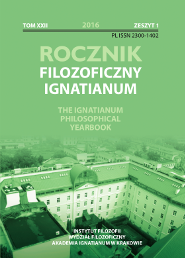Kryteria jakości życia dzieci i młodzieży
Quality-of-life criteria for children and adolescents
Author(s): Maria OleśSubject(s): Social Sciences, Psychology
Published by: Uniwersytet Ignatianum w Krakowie
Keywords: quality of life; children; adolescents; measurement tools
Summary/Abstract: This article presents the criteria and measurement tools employed when assessing quality of life for children and adolescents. The notion of ‘quality of life’ is dynamic, in that quality of life changes as a function of age, stage of development, level of reflection, the undertaking of new tasks, and the adoption of new roles. How we assess the subjective quality of life of children and adolescents depends on the level of development and quality-of-life criteria specific to a given period. For younger children, the fulfilment of basic needs - i.e. emotional needs, such as the need to feel safe or valued by others - is especially relevant. For older children, family and health are important, but so are peer-acceptance and school achievements. For adolescents, personal considerations such as the sense of self, autonomy, interpersonal relationships, having friends, possibilities of development and prospects for the future, are all important. It is possible to measure quality of life even in small children, but doing so requires that we pay attention to the specifics of their development, the scope of their personal experiences, and their ability to express their assessments. Hence an approach that makes use of an attractive format is to be preferred (i.e. pictures). Knowledge of the specific quality-of-life criteria involved enables researchers to construct adequate tools, and to use their results to help bring about improvements in quality of life and the promotion of healthy living.
Journal: Rocznik Filozoficzny Ignatianum
- Issue Year: 22/2016
- Issue No: 1
- Page Range: 114-129
- Page Count: 16
- Language: Polish

